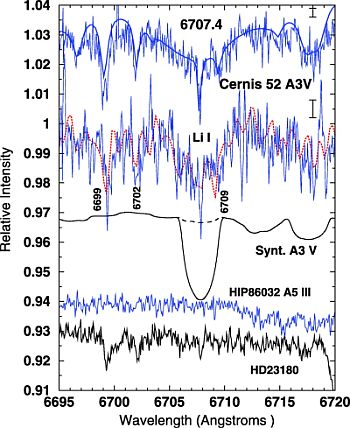 | |||
|
| Home > Public Information > Scientific Highlights > 2008 > Detection of Naphtalene Cation in the Interestellar Medium |
Detection of Naphtalene Cation in the Interestellar MediumWHT+ISIS
A team of astronomers led by IAC has reported evidence for the presence of naphthalene cation in a region of the interestellar medium with anomalous microwave emission.
This identification adds support to the hypothesis that this type of molecules can be the carriers of both diffuse interestellar
bands and anomalous microwave emission, and can play an important role in the formation of prebiotic molecules present in the protoplanetary material.
Polycyclic aromatic hydrocarbons (PAHs) have been postulated as the natural carriers for (1) the mid-infrared emission features widely observed in the interestellar medium; (2) the diffuse interestellar bands (DIBs), hundreds of absoprtion bands in the optical and near-infrared spectra of stars reddened by interestellar material; and (3) the so-called anomalous microwave emission, a diffuse emission detected at high Galactic latitude by several cosmic microwave experiments. In order to explore a possible connection between the carriers of the last two phenomena, the astronomers decided to investigate some DIBs toward the Perseus molecular cloud complex where recent observations demonstrated the existence of regions of anomalous microwave emission. They searched for DIBs by performing high-resolution optical spectroscopy of Cernis 52 (BD +31 640), a reddened star located at the line of sight of maximum anomalous microwave emission, and at a distance of 240 pc, where most of the dust extinction is known to concentrate in the Perseus OB2 dark cloud complex. They identified numerous DIBs toward Cernis 52 and found two new bands of likely interestellar origin with wavelengths and strenghts consistent with those of the naphthalene cation (C10H8+). Naphthalene is the simplest PAH, and the tentative identification of this cation reinforces the hyphotesis that this class of molecules could be carriers of the anomalous microwave emission.
|
| Top | Back |
|


